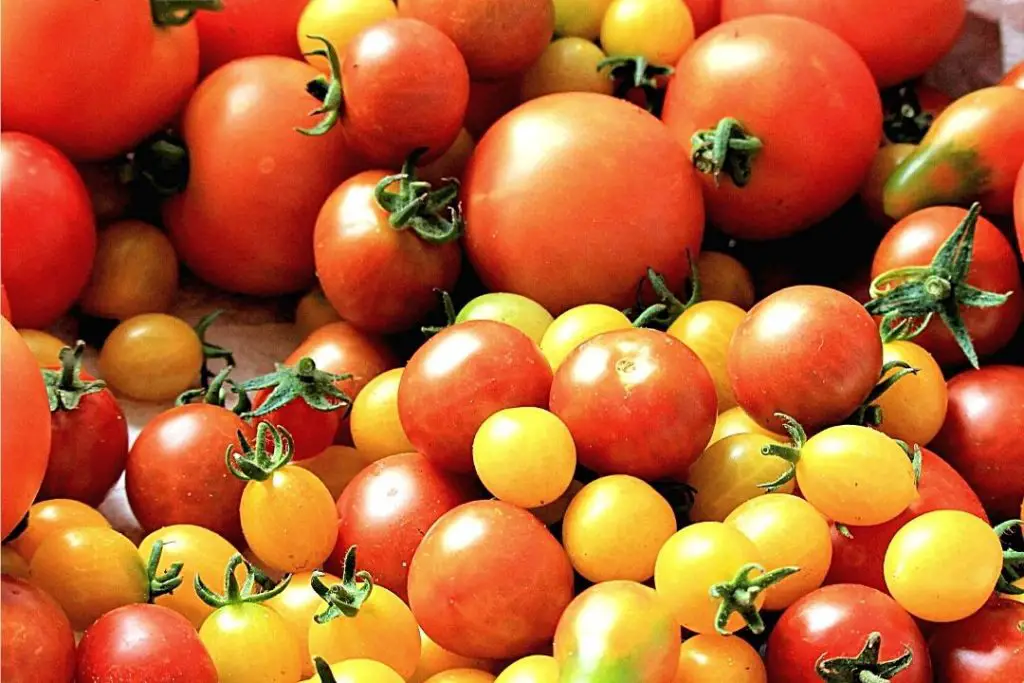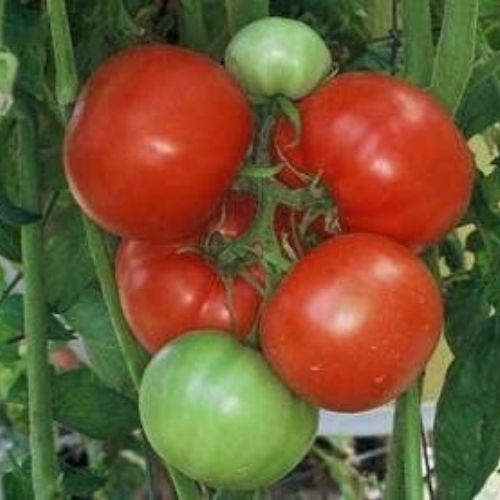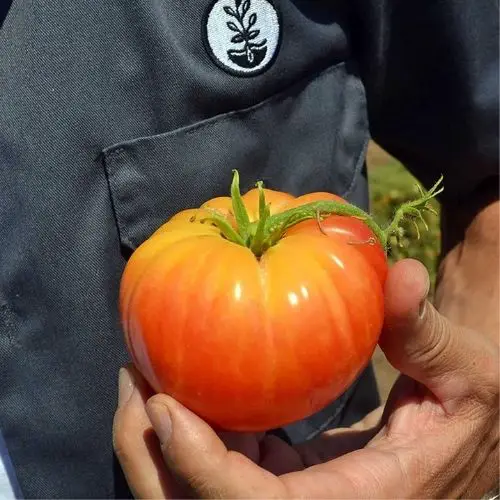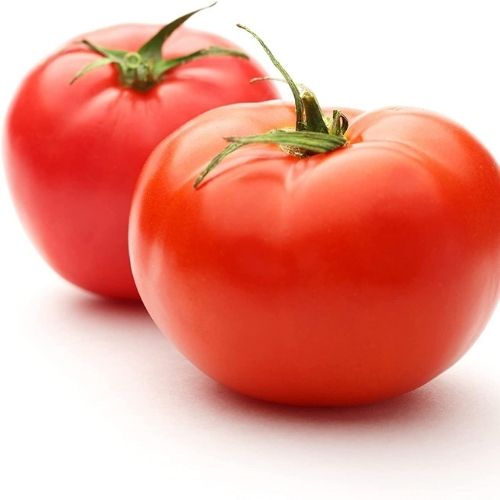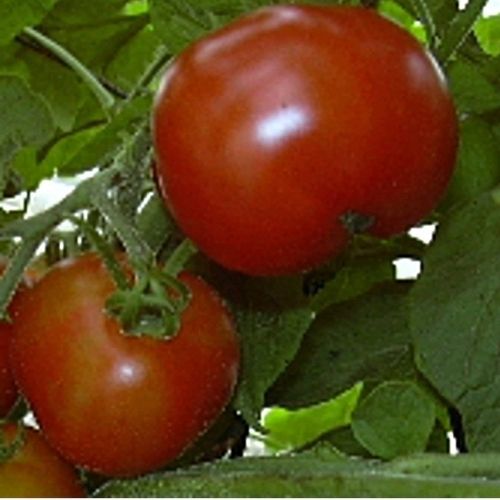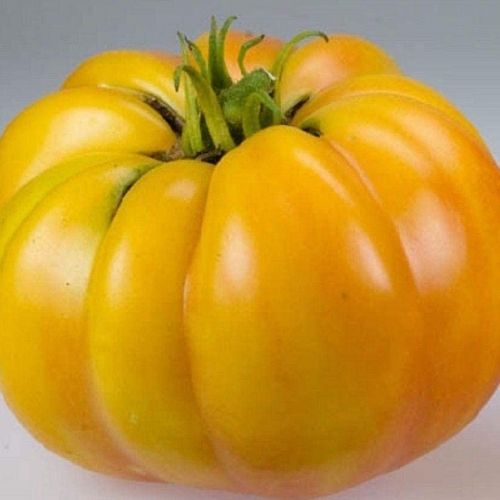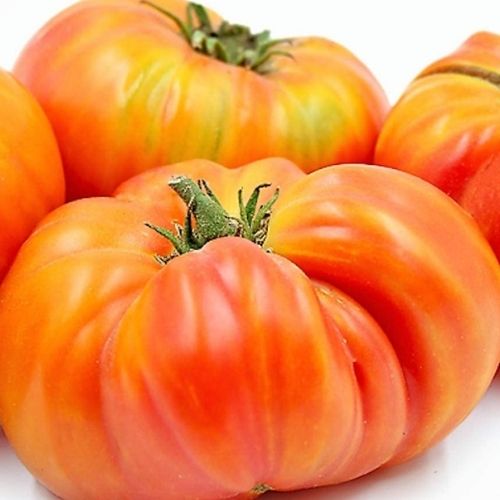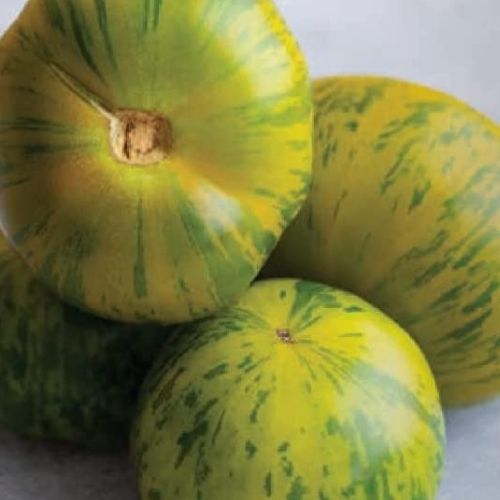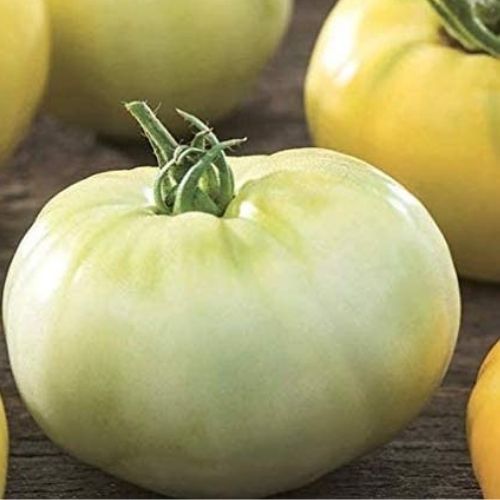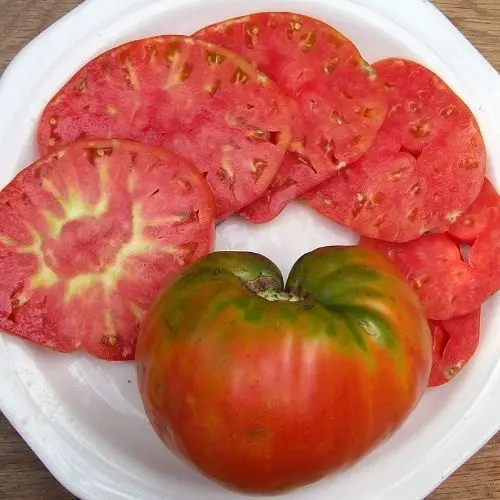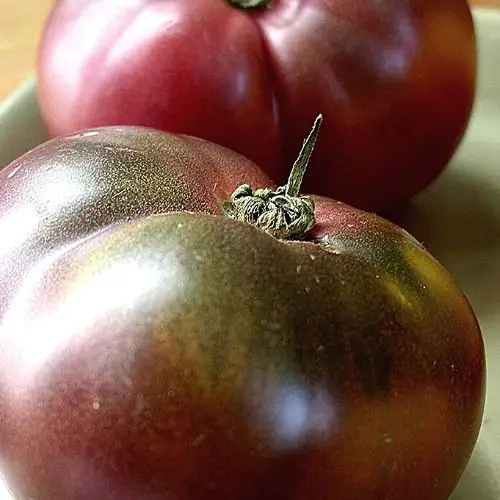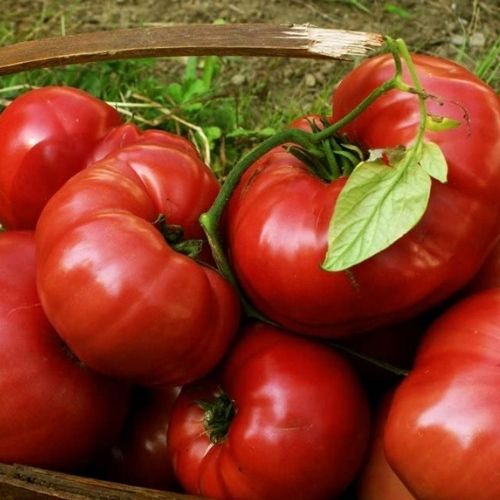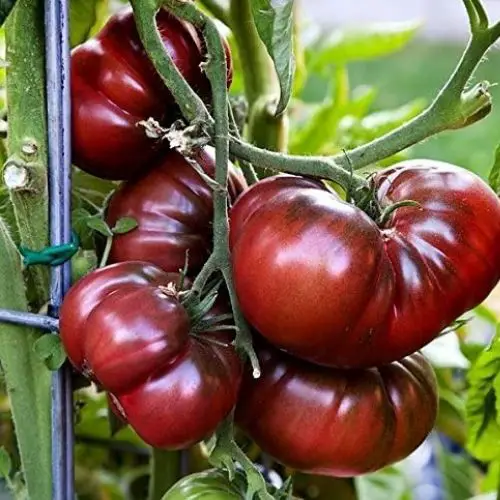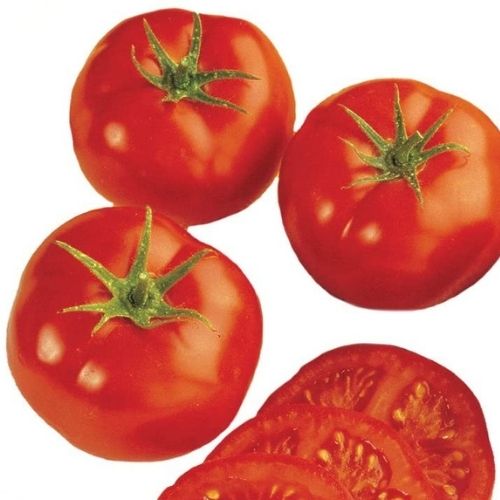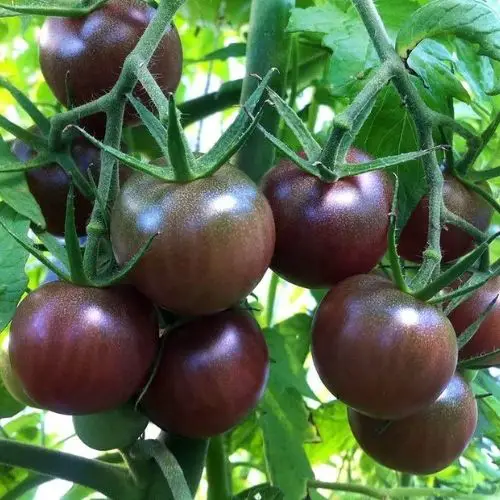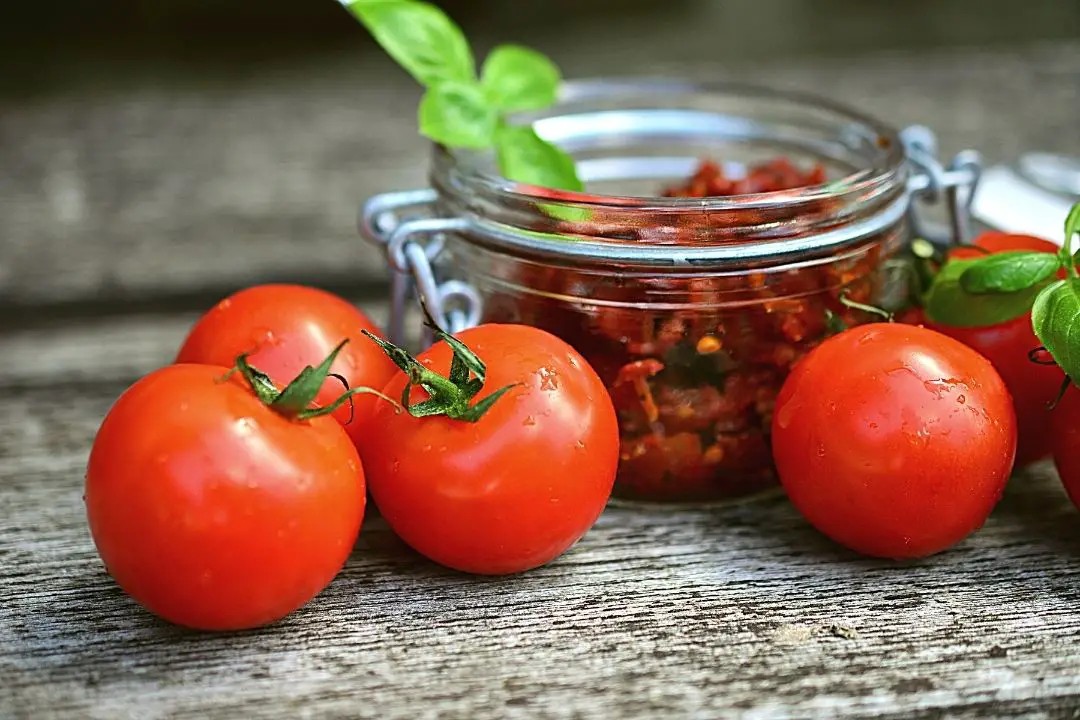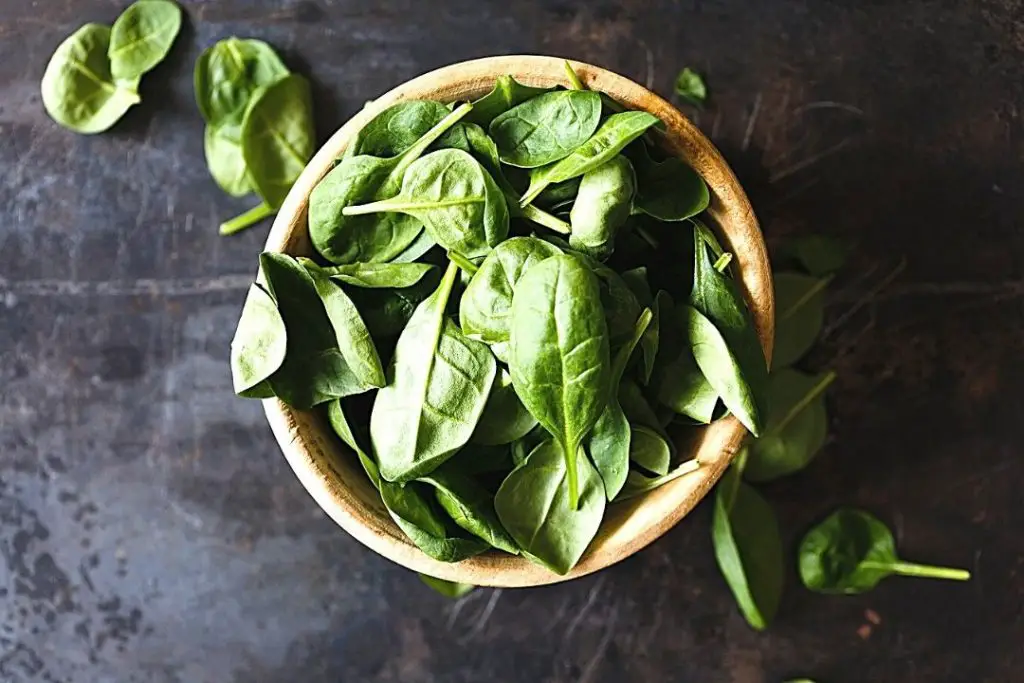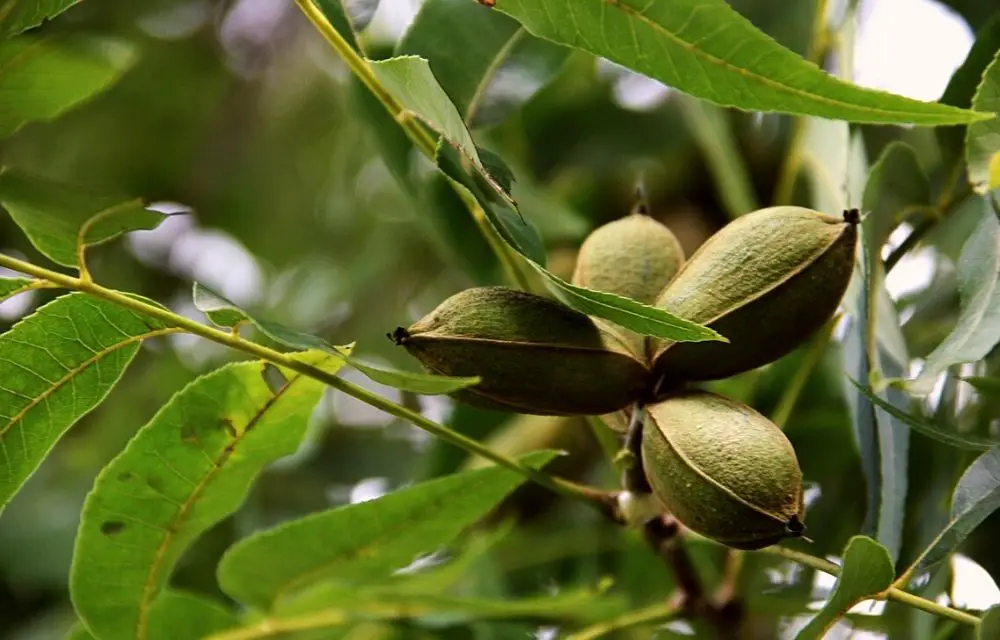As a gardener, if you’ve always wondered what are the best tasting tomatoes to grow, we’re so happy to have put this together for you!
Here’s a fun fact: Did you know that before the 17th century, most of the world considered tomatoes to be partly poisonous and were only used as an ornamental plant back then? This was because tomatoes are related closely to the family of nightshade and tobacco. However, it was later discovered that for most of it, it was the green parts of the tomato that were mildly poisonous. Fast forward to today and for what most of us can remember the tomato, is now one of the many tasty ingredients available to us to use in a variety of dishes, heck! Even by itself.
Tomatoes are either sourced independently or purchased at markets and supermarkets fresh, canned, stewed or sun-dried. The tomato is also commonly referred to by its scientific name Solanum Lycopersicum. Lycopersicon also means wolf peach. Tomatoes are highly sought for their nutritional benefits as they are one of the richest sources of lycopene, an element important for healthy prostate glands in men.
There are over 10000 varieties of tomatoes that come in a variety of shapes, colours and sizes. Yes. You heard me right. You’ve seen red, green and yellow tomatoes but pink, purple and even black ones exist as well.
So without further ado dear reader, let us get into a list that I have compiled for you on the best tasting tomatoes to grow on your own!
But before that, here’s a question to tickle your brain: The tomato. Is it a fruit or vegetable?
Get to the end of this and you might just find out!
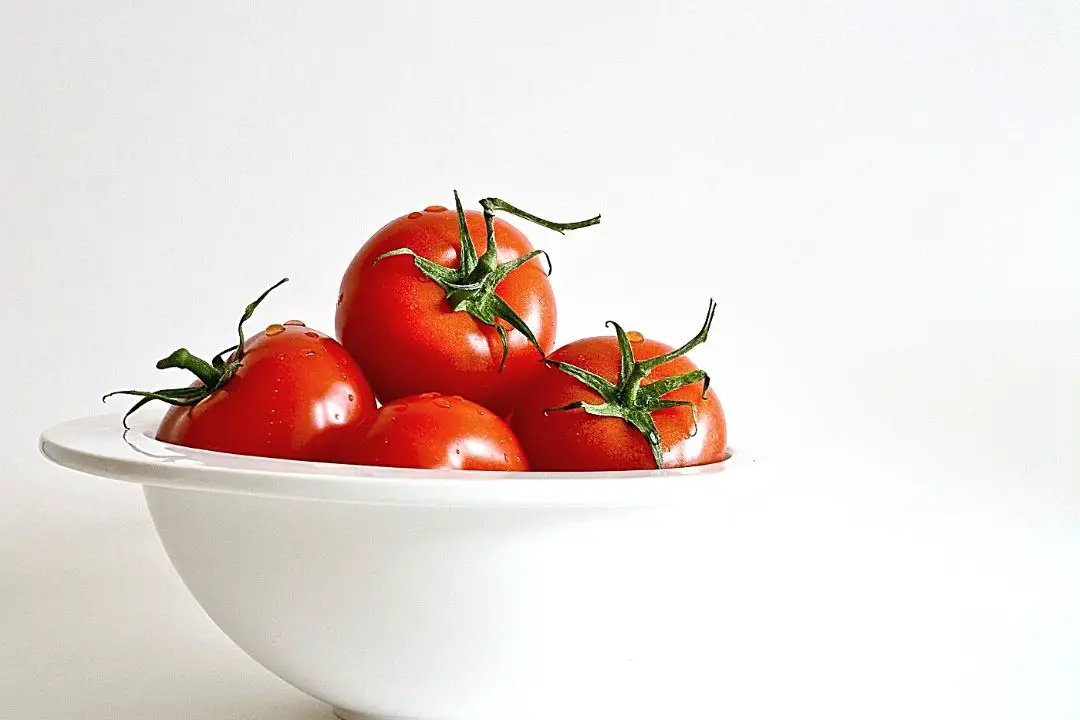
17 Best Tasting Tomatoes to Grow
Nepal Tomato
Nepal tomatoes are rich in vitamins and antioxidants. A Nepal tomato takes up to 78 days to mature and when they do, they develop a deep red appearance coupled with an intense tomato flavour. Nepal tomatoes bode well with cold weather as they’re native to the Himalayan mountains of Nepal. Sometimes, tomatoes are classified as either hybrids or heirlooms.
That being said, hybrids are formed where more than one species of tomato is involved in the breeding process. Heirloom tomatoes are the ones that are formed within a species itself. And in that category of heirloom tomatoes, the Nepal tomato stands out as one of the best tasting tomatoes to grow!
The Nepal tomatoes here are sold in a pack of 20 seeds for you to grow on your own. It ships directly from Ohio.
Pineapple Tomato
The Pineapple tomato is a beautiful 3lb yellow heirloom tomato with pink marbling inside and out. The tomato produces few seeds but packs an intense fruity flavor. The Pineapple tomato plant grows well on strong vines. It is a form of beefsteak tomato and for its size, it is on the larger spectrum of tomatoes.
This tomato is definitely one of the best tasting tomatoes to grow as it goes well when paired with salads and sandwiches. The Pineapple tomato does not only look exotic but is known for its sophisticated flavour combinations of sweet and citrus, and those flavours only get better as they mature towards the end of a season.
The Pineapple tomato is currently sold by the Sustainable Seed Company in a pack of 25 seeds. It is an open-pollinated tomato with a Non-GMO tag. It is boasted to have improved germination rates with an expected range of 75 to 95 days to maturity.
Red Snapper Tomato
Coined as the 2020 Rodeo Tomato, the Red Snapper tomato won that title as it was chosen based on a trial conducted for the quality of fruit, disease resistance, fruit production and overall health amongst 40 other varieties of tomatoes for over 2 to 3 years. This variety of tomato plants produce big yields of round, large to extra-large fruits.
It is advertised to have large, round fruits with great texture and flavour with a germination rate of 70% or higher.
The Red Snapper tomato is available for purchase at David’s Garden Seeds Store in a pack of 25 Non-GMO hybrid seeds. They are hand-packed seeds that would reach maturity in about 75 days.
Magnus Tomato
Magnus tomato seeds are perfect for planting in gardens and greenhouses. For this tomato variety, you would want to directly sow the seeds for about half an inch deep in seed-starting formula in a moist soil of 70 degrees Fahrenheit. 25 Non-GMO and organic seeds in a single pack available at Seed King Express.
Magnus Tomatoes are heirloom pink tomatoes, unique for their distinct tangy flavours, similar to a watermelon in fact. So if you’re into that, this could be one of your best tasting tomatoes to grow!
Lucky Cross Tomato
A tomato that looks similar to what you would imagine a mini, smaller-sized pumpkin to be. With its bright yellow beefsteak features and its intense sweet flavours, the Lucky Cross tomato boasts a germination rate of a high 85%.
This tomato takes up to 85 days to mature and in the right conditions, these plants could give you a yield of 8 to 14 oz. of bi-coloured tomatoes.
Lucky Cross tomatoes are very sweet and juicy and can be used as a great addition for sandwiches, salads and slicing.
Hillbilly Tomato
Being West Virginia’s pride, the Hillbilly tomatoes are sold in packets of 20 seeds at Papaw’s Garden Supply LLC. They’re usually yellow, red and orange and a beefsteak variety of tomatoes with a texture similar to a peach fruit. Hillbilly tomatoes are great for slicing. They are sweet with hints of other mild flavours.
These tomatoes are crack resistant and they do well in tolerating heat. These fruits grow well on long vines up to heights of 10 feet.
If you’re a fan of pairing cheese with tomatoes, look no further for this one’s got you covered.
Green Zebra Tomato
The one of a kind Green Zebra Tomato certainly stands out as one of the best tasting tomatoes to grow, apart from its unique features and colour as well. Although named after its dominating green hue, the Green Zebra tomato is actually yellow with green stripes. This tomato is packed with flavor and an excellent choice for slicing. It does have a more citrusy taste similar to lemons and limes which make it a good choice for salads, salsa sauces and burgers.
This is an indeterminate type of tomato and these seeds are non-GMO. It will produce all summer long, so keep picking through the summer months. It is best to start tomato plants indoors in most zones. Be sure to not plant them outside until you are sure that there is no risk of frost hazards.
You can get them by purchasing a pack of 250 mg of green heirloom beefsteak tomato seeds. You can expect full-grown 2-inch tomatoes in about 75 days.
Green Giant Tomato
Just like its name, the Green Giant tomato is definitely one of the extra larger ones, weighing anywhere between 13 to 30 ounces a piece, sometimes even more. Green Giant tomatoes have a smooth texture with bright green flesh that remains green even as they ripen.
At the peak of maturity, the tomatoes would have a tint of yellow. You can expect these tomatoes to have a distinct spicy flavour with sweetness, that of a watermelon.
Since the Green Giant tomato plant is a tall one, you might want to grow them by staking the plant on support structures to support its heavy and large fruits. You can use the tomatoes both raw and for cooking. Their sweet and zesty flavours do well for salsa sauces and due to their large size, they can be great for slicing as well.
Use them in your burgers, salads and sandwiches and you can not go wrong with it. To take advantage of its flavour, store the Green Giant tomatoes at room temperature until they ripen, after which they can be refrigerated to slow further ripening.
Beefsteak Green White Tomato
Looking to turn a few heads towards your in-home garden? Look no further. The Beefsteak Green White Tomato stands out with its unique pale white features with hints of green. The Beefsteak Green White Tomato not only looks different but it is usually considered the biggest fruit of the white tomato variety, sometimes weighing up to about 2 lbs. They have delightful sweet flavours and they definitely are ideal choices for slicing, sandwiches and salads.
For this tomato variety, you will want to start growing them indoors for about 8 weeks before the last frost of spring. Keep the temperature regulated at about 70 degrees Fahrenheit until germination occurs. With adequate lighting and moist soil, you can expect to grow wonders with this tomato plant.
The seeds are sold in packs of 50 heirlooms, non-GMO seeds at Isla’s Garden Seeds. They take about 85 days to achieve full maturity.
Glamour Tomato
Believe it or not, some people choose to grow this one solely for its name, the Glamour tomato. But here are the facts. They are meaty with intense flavours and are perfect for sandwiches and slicing. The Glamour tomato is an indeterminate type that takes up to 74 days to achieve full maturity. Once grown, this plant sets out clusters of red, 6 oz. solid and crack-resistant tomatoes.
They are so tasty that you could eat them fresh and are usually a choice for mass-produced canning. You can purchase tomato seeds for about 20 seeds a packet online.
German Red Strawberry Tomato
This German heirloom tomato plant yields large and red strawberry-like shaped tomatoes. Each fruit can grow up to 3 inches wide and can weigh up to 1 pound. Although the shapes of the tomatoes can be quite inconsistent, you can expect a classic robust tomato packed with sweet flavours that can be used for slicing, sandwiches and burgers.
You can grow them out yourself by purchasing a pack of 30 seeds from the Palm Beach Medicinal Herbs Store.
In each pack, there is a clear manual on the germination process and further instructions so it could be even perfect as a gift to an old friend.
Ferris wheel Tomato
The Ferris Wheel Tomato is an old tomato variety that was popular some time ago until rediscovered in the 90s. Some of these tomatoes could grow up to 32 ounces. Commonly sought for its robust flavours, the Ferris Wheel tomato is a juicy fruit with mildly sweet flavours.
You are able to purchase them in packets of 20 seeds to grow them on your own. These tomatoes are heirloom and open-pollinated.
Cherokee Purple Tomato
The Cherokee Purple Tomato is a pre-1890 heirloom tomato variety with a distinct purple hue to it. The flavour of this tomato is said to be both sweet and smoky, rivalling the tomato that I will be writing about next, the Pink Brandywine Tomato. These plants can produce huge yields of 8-16 oz. fruits.
One of the main reasons the Cherokee Purple Tomato is considered one of the best tasting tomatoes to grow is that in almost all conditions, this plant thrives and makes delicious fruits.
For this indeterminate variety, consider staking it as some plants can weigh up to 20 lbs. They are sold in packs of 75 seeds, available at Ohio Heirloom Seeds Store.
Pink Brandywine Tomato
Pink Brandywine tomatoes have actually been called the best-tasting tomatoes to grow in the world. This tomato is definitely meaty and flavorful. This one would be an excellent choice for slicing and would pair very well with savoury herbs and soft cheeses. Be sure to use a serrated knife or at least a very sharp non-serrated one as this retains more juice in each slice.
This variety of tomatoes are also considered to be the best tasting tomatoes to grow by many gardeners and can be dated back all the way to the mid-1800s. They are aesthetically amazing and would take up to 80 days to achieve full maturity from the point of transplantation.
They are currently sold by the Ohio Heirloom Seeds Store in packs of 75 seeds, boasting a germination rate of 75%.
Black Krim Tomato
Harley Seeds currently sells this tomato variety in packs of over 30 non-GMO, heirloom seeds. The Black Krim tomato plant is an indeterminate variety that is open-pollinated. They are low in acid and sweet which make them excellent picks for sandwiches and salads.
The Black Krim has an elegant appearance and has been coined as the best flavoured black tomato. This plant bears 5-inch globe-like fruits with unique colour combinations of violet-brown and purple-red.
With sufficient sunlight and heat, the Black Krim tomatoes can turn almost black.
Early Girl Tomato
The Early Girl tomato variety is high yielding and could reward you with a bunch of 5 oz. red tomatoes. They are available in packets of 50 seeds at the Burpee Store where you can find over a thousand other vegetables, flower seeds and herbs.
This tomato has a classic round shape, suitable for slicing and they make great additions to sandwiches, bagels and even soups! Thanks to its amazing flavour, Early Girl tomatoes are commonly sought for to make sauces.
Be sure to keep these precious tomatoes at room temperature as refrigerating them could alter their flavour and texture.
Black Cherry Tomato
Just like the cherry, the Black Cherry Tomato is often called candy sweet. These tomato plants are available for purchase in packs of over 30 non-GMO seeds. The Black Cherry tomato is capable of yielding large, mahogany-brown cherry tomatoes but you may need to support it well as the fruits can get heavy. A lot of care and attention is required to properly grow this tomato variety but one bite out of its fruit would definitely motivate you to plant more.
Black cherry tomatoes can easily substitute common red tomatoes in pizza and salsa recipes, and they also taste amazing in soups. They pair well with soft cheeses like burrata as well as aged cheeses like parmesan.
At the peak of their maturity, Black cherry tomatoes develop a smoky and sweet flavour. You can eat them fresh or in a salad, though they also taste great grilled or roasted.
Growing Tomatoes Care Guide
Soil
Unlike several types of plants which would require you to invest in specific kinds of soils, tomatoes aren’t picky and they do thrive in typical organic composts or animal manures. Be sure to keep the soil up to about 5 inches tall in your pot before planting your tomato plant and also be wary of the seedlings exhibiting white spots. Remember to only transplant seedlings which are healthy. It is better to prevent than to repair.
Light
Provide your tomato plant with up to 8 hours of direct sunlight with a minimum of 6 hours. To avoid overexposure of sunlight and potential damage caused by it, you might want to provide it with a proper shade after that window.
Watering
Your plant would require adequate water. Not too much nor too little. Transplants should only be watered deeply for the first 3 days. After that period, it then depends on the climate of your location and should be watered deeply only once a week, followed by once a fortnight. This promotes better deep root development and also deters fungal spores from being stimulated from too damp conditions.
Temperature
If you are a hobbyist gardener who is quite passionate about the art of growing plants and caring for them (If you searched for an article about this, you probably are one already), you probably already know that agriculture requires investment in terms of money, sweat, time et cetera. A good investment that could set you up for success would be the purchase of a soil thermometer. A piece of anecdotal advice passed on from several home gardeners would be to just place a finger in the soil to gauge the temperature, and you can do this.
However, if you do wish to be precise, you can’t go wrong with a soil thermometer. Key temperatures to note, tomato plants would not survive under temperatures of 35 degrees Fahrenheit, and will not grow optimally in temperatures under 50 degrees Fahrenheit. Ideally, you will want to aim to grow your plant in the range of 55-85 degrees Fahrenheit. On a side note, you may want to know that certain types of tomatoes do in fact thrive in different temperatures.
Humidity
Humidity refers to the amount of water present in the air. Situations with high levels of humidity could also mean that the surrounding conditions are cool and damp. This may contribute to the stimulation of fungal spores which could lead to a common occurrence known as late blight.
Late blight can be fatal to your tomato plant but early signs do appear as white or brown spots on the leaves. Pruning off the leaves can be the first step to counter the spread. Or you could avoid this entirely by keeping the plant at a location where the humidity levels are controlled.
Fertiliser
Fertilisers catering specifically to tomato plantations and their nutrient deficiency can help supplement the plant with specific nutrients for it to grow healthily. Again, one important note to keep in mind here is that moderation is key. Too much fertiliser can also cause issues for your tomato plant.
Toxicity
Tomato plants aren’t known to be toxic but with an amplified use of insecticides or fertilizers, there’s bound to be toxicity. Even when growing and nurturing young tomato plants, keep in mind that too much fertilizer could even cause the plant to not bear any fruit as well.
Pruning
Pruning is the term used to describe the process of cutting away parts of a plant to encourage growth. In this case, pruning away your tomato plant isn’t only to promote growth but also as a treatment against powdery mildew. This is done by pruning away the leaves with white spots to avoid the spreading of fungal infections to the other parts of the plant.
Poor air circulation also contributes to fungal diseases hence, pruning may also help in preventing future powdery mildew infections. Since fungal infections can spread quite easily, it is essential to sanitise the tools that you use to prune to prevent the spread. Moderation is key to pruning. In cases involving tomato plants with multiple infected leaves, keep in mind that pruning off too many of them may lead to severe damage to the plant itself. A situation like this would call for some fungicide to treat the remaining leaves which aren’t too badly infected to ensure a moderate and safe amount of pruning.
In cases apart from powdery mildew, tomato plant leaves turning white can also happen due to another fungal infection known as the Sequoia leaf spot. If this is the case, you can expect your tomato plant leaves to have white or grey spots with darker edges on the upper part of the plant. Removing the affected parts of the tomato plant is advised.
Propagation and Growth
Propagating a tomato plant is quite a simple procedure. All you would need is a cutting from a tomato plant, a jar filled with water, and a place for it to grow with adequate sunlight. Farmers recommend cutting a specific part of a tomato plant for propagation. If you are looking into propagating your plant, look out for the main stem of the plant, and notice the stems that branch out from the main stem.
These are known as side shoots or suckers. Aim to cut these side shoots about 5 inches tall. Then, fill a jar with water at room temperature and set in the cutting you just made. Be sure to remove the leaves at the bottom of the cutting, leaving the top ones. If everything is done right, you should expect to see new roots emerging in about 2 weeks. From this point, all rules of transplanting discussed in this article should follow.
Repotting
After some time, young tomato seedlings would need to be transplanted outdoors and would require repotting. During this time, it is crucial to observe the growth and development of the young seedlings. If some of the tomato plant seedlings exhibit white spots, be sure to only re-pot the ones without the spots to prevent the possibility of spreading an infection to other parts of the plants.
Plant Diseases
Like humans, plants are also burdened by the risk of infections and diseases. These include a range of anything from bacterial and fungal infections to nutrient deficiencies. In any case, constant care and attention equipped with the right knowledge would help you to grow your tomato plant successfully.
To summarise, attentive care in the transplantations of young tomato seedlings, adequate watering, proper sunlight, shed and wind conditions and careful use of fertilisers and fungicides are all you need to ensure your tomato plant could grow with minimal risk to plant diseases.
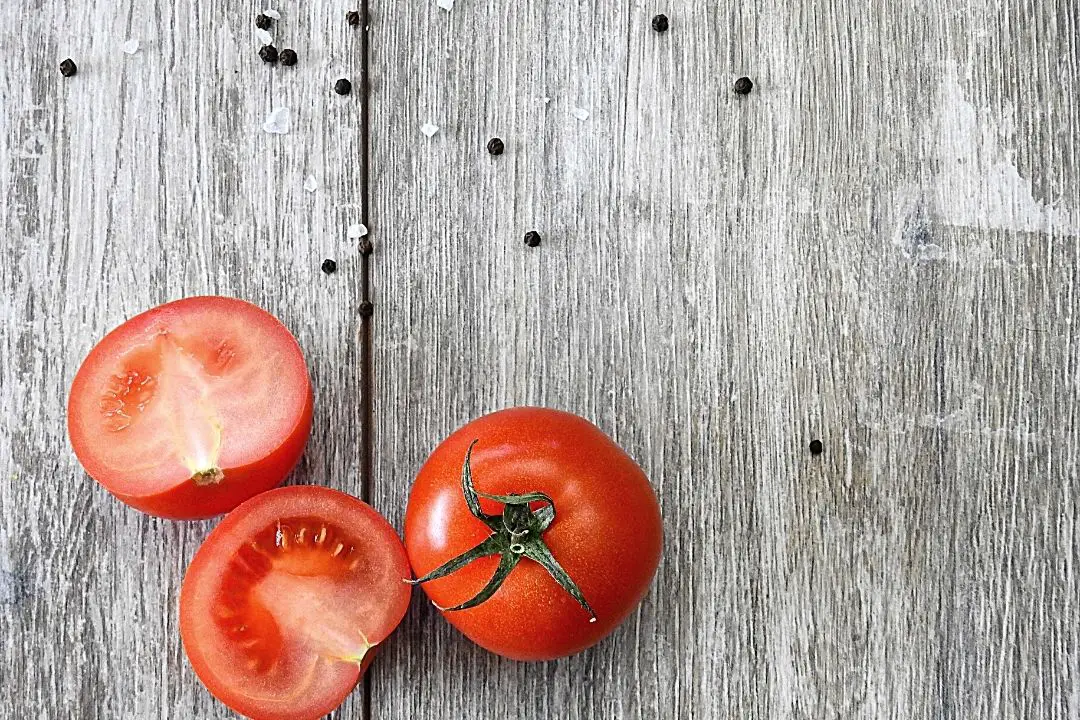
Common Issues with Growing Tomatoes
Tomato plants (Scientific name: Solanum Lycopersicum) are sensitive to a variety of factors and more often than not, even too much cold or heat are among the many factors that play important roles in its growth. There are many reasons why tomato plants face issues such as their leaves turning white, fungal infections et cetera and in this article, they will be discussed thoroughly.
For starters, due to their long growing period, people tend to grow them indoors first and then transplant them outdoors when the soil is warm.
During this transition, problems may occur due to its susceptibility to temperature and light conditions which causes vulnerability to the occurrence of tomato leaves turning white, which can appear at first as small white spots. Although not always fatal, these conditions may lead to the death of the plant or reduce the quantity and quality of your yield which in turn affects the taste of the tomatoes as well. However, the good news is steps can be taken so that these cons are somewhat reversed, if not prevented.
When your tomato seedling reaches its point of growth as mentioned before, you will have to re-pot it so that it grows outdoors. This period of transplantation, also known as the hardening off, is important and would require proper care and attention.
When moving the seedlings from indoors to outdoors, let them sit around under a shade for a few days, or move them only on cloudy days to avoid hard-hitting direct sunlight to prevent heat or light extremes.
During the initial period of growing tomato plants, people are encouraged to care for the young tomato seedlings indoors for extra care and protection from unpredictable climate conditions.
It is recommended that the seedlings be transplanted only when they grow to about 3 inches tall and when temperatures are at an average of 50 to 60 degrees Fahrenheit. However, a common mistake that many tomato plant carers make at this stage is that they shift the young seedlings outside right away without any period of adjustment.
Transplanting young tomato seedlings from indoors to outdoors is almost like guiding a baby that crawls to begin walking – it requires a great deal of time, patience and supervision.
Without a gradual transition, the young tomato seedlings would experience a form of shock due to their vulnerability to extreme heat, light and surrounding conditions. And this may cause the plant to experience sun scalding which would appear as a white border around the leaf of the tomato plant which would soon cause damage to the entire foliage. Mature tomato plants that experience sun scalding would result in blistered tomatoes.
Extreme wind conditions do not cause tomato plant leaves to turn white per se, but they certainly are a reason why it may accelerate the spread of infections from one part of the tomato plant to other parts of it. Hot/dry winds can damage the seedlings or a mature plant as well. In cases of fungal infections, wind can spread the infections from one leaf to another, sometimes to the entire foliage itself.
During transplantation, you can place a windshield to protect the young plant from harsh winds or relocate them to a place where the wind conditions can be controlled. On a plus side, this also improves air circulation which in turn encourages the growth of the tomato plant.
Tomato plants require adequate humidity to survive and grow. Too little or too much of it would not be good for the development of seedlings into mature, healthy plants. With a lack of proper sunlight and in conditions with high humidity levels exceeding 70%, this may be the perfect ground for infections to breed, especially fungal ones.
Likewise, too much water by itself is harmful to the plant as well. A tomato plant should be watered at a controlled, sufficient amount and when overwatering happens, the high concentration of water in the soil would stimulate fungal spores. When your plant is affected by fungal infections, consider purchasing a fungicide as early use of it can treat white spots on tomato plant leaves.
As alternatives to fungicide, one may also use Neem oil, milk spray and a homemade sodium bicarbonate spray to repair the white spots on tomato leaves. These items can be purchased commercially or you can also D-I-Y at home. Neem oil functions as an organic fungicide but may also be used to prevent pest attacks.
Plants are almost like us. Living things that require sufficient nutrients to grow and develop well. With that said, nutrient deficiency is an actual matter to pay close attention to when caring for young seedlings and also when keeping them healthy as they grow to mature plants. Lack of specific nutrients can also be the reason why tomato plants turn white.
For example, the lack of nutrients such as nitrogen and phosphorus may cause white spots on tomato plants leaves, sometimes yellow spots as well.
Low levels of calcium and magnesium may also cause a similar whitening effect on tomato plant leaves. In this case, one way to distinguish between the two scenarios is that with the lack of nutrients such as calcium or magnesium, the leaves of the tomato plant may turn white while still maintaining a green hue on the veins of the leaf.
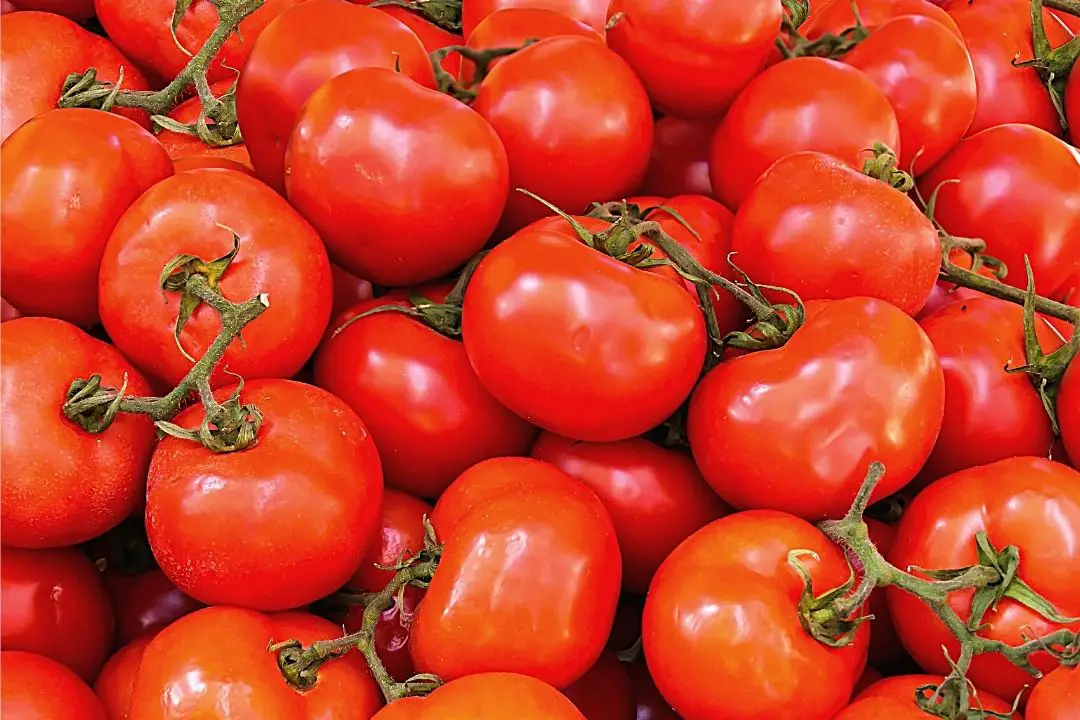
Best Tasting Tomatoes to Grow Frequently Asked Questions
What is the sweetest tomato to grow?
A heavily debated question resting in the subjectivity of every taster. A personal favourite would be the black cherry tomato. A classy cherry variate that boasts rich flavours of smoke and sweetness.
What is the best eating tomato to plant?
As it goes without saying, this is entirely subjective. However, the Green Zebra and the Black Krim seem to be a personal choice of mine and many other gardeners.
What is the best tasting slicing tomato?
As opposed to the prior question, this one certainly narrows things down a little. For slicing, I would opt for the beefsteak variety of tomatoes as they are ribbed and juicy fruits, which make them perfect for slicing.
Which tomato is easiest to grow?
Fear not, for beginners a common recommendation would be to start out with cherry tomatoes. This is because they are able to produce crop after crop and usually come with very minimal problems and high, sweet rewards. Pun intended.
What is the most popular tomato?
The Beefsteak tomato certainly is a favourite to many home gardeners as they are large and meaty, and they do act as an all-purpose, versatile variety of tomatoes.
What is the most disease resistant tomato?
Some of the most disease-resistant tomatoes include the Early Girl, Sungold and Brandywine.
Conclusion
Tomatoes are rich in vitamin C and vitamin A, which is important for healthy eyes, skin, bones, and teeth, and they are a great source of folic acid, fibre, and iron. They also contain good amounts of vitamin B and potassium, making them effective in reducing cholesterol levels and lowering blood pressure.
So this makes one consider, why not grow them on your own? Well, I hope this write up encourages you to do just that! Choose wisely and good luck.
And for the ones who made it here, wanting to know the answer to my first question in this article, here you go!
Tomatoes are in fact fruits but were referred to as vegetables for a good period of time only for taxation purposes.
There you go! And if you enjoyed reading this be sure to take a look at this article as it may prepare you for what’s next.
Related Articles that you might like:


